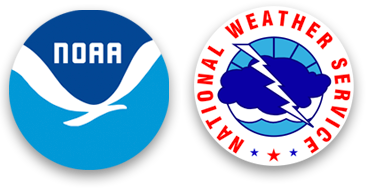Long-Lived and Destructive: The June 29, 2012 Derecho - National Weather Service Heritage

Long-Lived and Destructive: The June 29, 2012 Derecho
By Emily Senesac (emily.senesac@noaa.gov)Perhaps one of the most uncommon weather occurrences, “derechos” aren’t too well known to the general public. Up until about a decade ago, those who lived outside of the central and southern plains regions of the country, where derechos happen most frequently, had probably never heard the word used. However, by 2012, that would all change.
A derecho is a widespread, long-lived windstorm, usually associated with large-scale clusters or lines of quickly-moving convective showers or thunderstorms known as “bow echoes” or “squall lines”. The word was originally coined in 1888 by Dr. Gustavus Hinrichs, a physics professor at the University of Iowa, in order to distinguish the thunderstorm-inducing, straight-line winds of a derecho from the rotating winds of a tornado. The word “derecho” is Spanish for “direct” or “straight ahead”, referring to the characteristic straight line wind damage caused by the average derecho. Derechoes are classified by squall lines or bow echoes that produce damage from severe wind gusts (greater than 57 miles per hour) that travels over 250 miles, with isolated gusts of higher speeds.
The “Corn Belt Derecho”, occurring on June 29, 1998, fit the bill for this specific type of storm. Traveling from Nebraska to Kentucky, the derecho covered almost 600 miles of land in about 10 hours, with wind gusts that reached 126 miles per hour. Though it wreaked havoc on crops, caused substantial power outages, and resulted in more than $125 million in damages, no direct fatalities occurred. On average, this area experiences about one derecho each year, providing a bit more familiarity when it comes to preparedness, as shown in the graphic on the left. Other areas of the country, outside of the Upper Midwest, Ohio Valley, and Southern Plains, are not quite as familiar with these powerful storms.
Exactly fourteen years after the “Corn Belt Derecho,” on the morning of June 29, 2012, scattered thunderstorms over eastern Iowa evolved into a potent line that rapidly expanded eastward as the day went on. Throughout the afternoon and evening, a continuous path of strong wind was reported from Iowa all the way to Virginia, affecting Illinois, Indiana, Pennsylvania, Maryland, and even North Carolina and New Jersey during its 12-hour rampage. With isolated gusts of 70-80 miles per hour, along with a few reports near 90 mph, this derecho produced the all-time highest recorded June/July wind speeds at several sites along its path, blowing the roofs off of cars, schools, homes, and businesses during the process.
Working with local WFOs located in the path of the storm, the NWS Storm Prediction Center issued several severe thunderstorm watches ahead of the racing cluster of storms. By the time the derecho reached the Mid-Atlantic Region, WFO Baltimore/Washington had issued 15 sizable Severe Thunderstorm Warnings and two Tornado Warnings across their area of responsibility.
The derecho caused widespread damage across several states, most of which can be attributed to trees that toppled onto structures and powerlines. In urban Maryland, Virginia, and Washington, D.C., intense winds severed overhead electrical feeders. Two individuals were electrocuted by downed power lines, and over 2 million lost power, a widespread outage which would take almost a week to restore. In the DC metropolitan area, the loss of power interrupted 911 services, compromising community safety. Additionally, millions struggled without power in the life-threatening heat wave that persisted in the days after the storm.
All told, the derecho traveled about 700 miles in 12 hours, resulting in 22 deaths and leaving millions of dollars in damages in its path.
Although numerous Severe Thunderstorm Warnings were issued out ahead of the storm, many with long lead times, the sudden and intense nature of derechos, particularly the 2012 “Super Derecho”, can be challenging to forecast well in advance. Looking ahead to the further development of satellites, radar, and forecasting models, it is the hope of many in the meteorological community that derechos will be forecast with more accuracy in the years to come.
Additional Reading
